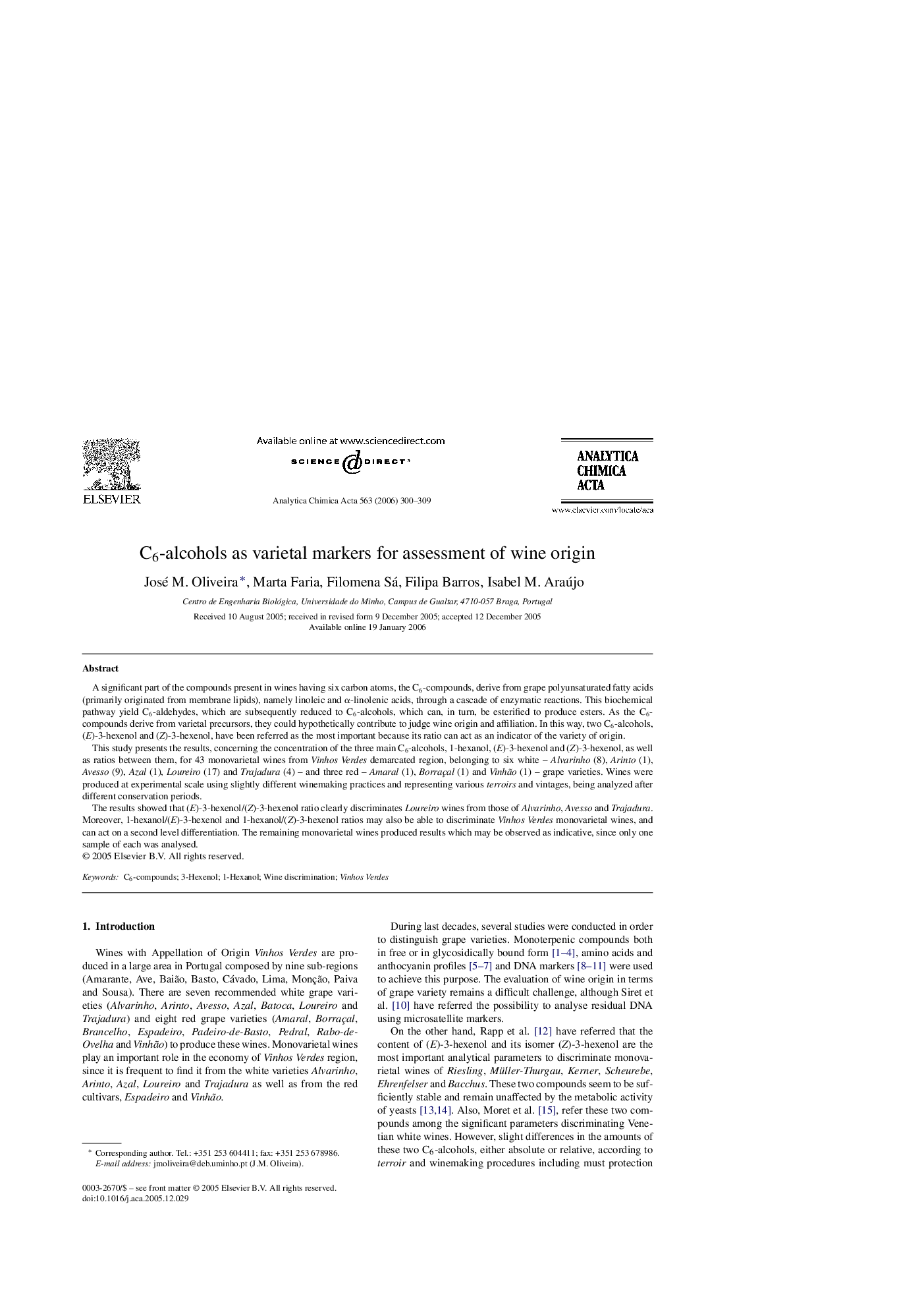| Article ID | Journal | Published Year | Pages | File Type |
|---|---|---|---|---|
| 1171643 | Analytica Chimica Acta | 2006 | 10 Pages |
A significant part of the compounds present in wines having six carbon atoms, the C6-compounds, derive from grape polyunsaturated fatty acids (primarily originated from membrane lipids), namely linoleic and α-linolenic acids, through a cascade of enzymatic reactions. This biochemical pathway yield C6-aldehydes, which are subsequently reduced to C6-alcohols, which can, in turn, be esterified to produce esters. As the C6-compounds derive from varietal precursors, they could hypothetically contribute to judge wine origin and affiliation. In this way, two C6-alcohols, (E)-3-hexenol and (Z)-3-hexenol, have been referred as the most important because its ratio can act as an indicator of the variety of origin.This study presents the results, concerning the concentration of the three main C6-alcohols, 1-hexanol, (E)-3-hexenol and (Z)-3-hexenol, as well as ratios between them, for 43 monovarietal wines from Vinhos Verdes demarcated region, belonging to six white –Alvarinho (8), Arinto (1), Avesso (9), Azal (1), Loureiro (17) and Trajadura (4) – and three red –Amaral (1), Borraçal (1) and Vinhão (1) – grape varieties. Wines were produced at experimental scale using slightly different winemaking practices and representing various terroirs and vintages, being analyzed after different conservation periods.The results showed that (E)-3-hexenol/(Z)-3-hexenol ratio clearly discriminates Loureiro wines from those of Alvarinho, Avesso and Trajadura. Moreover, 1-hexanol/(E)-3-hexenol and 1-hexanol/(Z)-3-hexenol ratios may also be able to discriminate Vinhos Verdes monovarietal wines, and can act on a second level differentiation. The remaining monovarietal wines produced results which may be observed as indicative, since only one sample of each was analysed.
